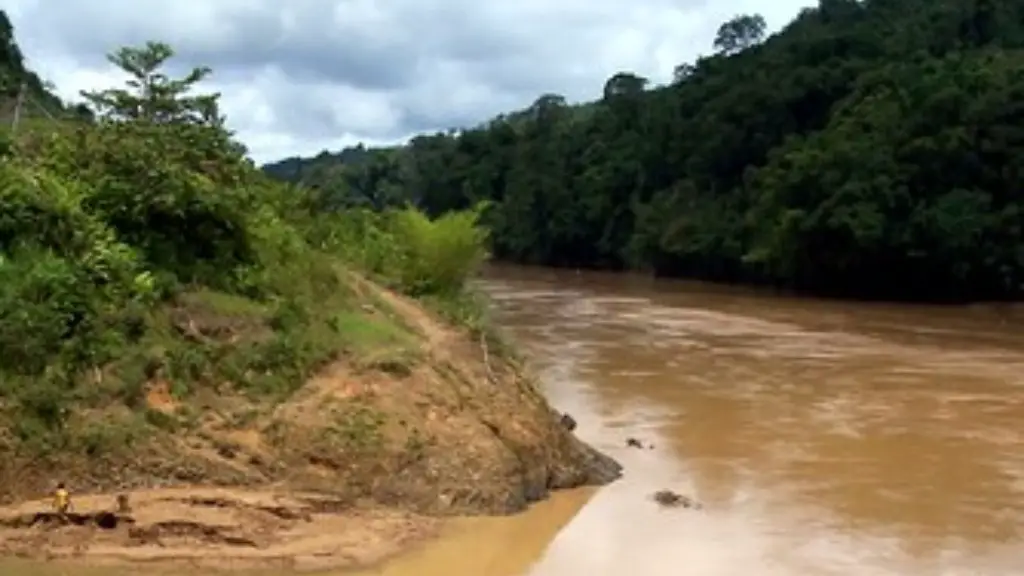The Mississippi River is one of the largest rivers in the world and a major source of water and transportation for many in the United States. It also is a major source of pollution and has long been known for being a murky, muddy river with plenty of contaminants. But was it ever clear?
Much of the sediment and contaminants that muddy the Mississippi River today come from upstream activities such as mining, agricultural run-off, and urban development. However, some experts believe that the river used to be much clearer before these activities polluted it. Before widespread development upstream, the Mississippi River didn’t have to contend with these sources of sediment and pollutants, and it may have been much clearer than it is today.
It’s also important to note that the river itself is ever-changing. Different times of year can affect the clarity of the water. Heavy rains and flash floods can quickly muddle the water, while times of extended drought can thin it out. This can also contribute to sediment and pollutants settling at the bottom of the river, further muddying it up. So even in pre-development days, the clarity of the water likely varied from season to season and from year to year.
There isn’t much solid evidence of the river’s natural clarity, since the development of the river began much too long ago for us to track the changes. However, many experts agree that at least in some spots, it was certainly much clearer than it is today.
In order to reclaim some of that clarity and reduce the amount of pollutants entering the river, conservation efforts are underway both at the state and federal level. Many of these efforts involve reducing agricultural and industrial runoff, as well as working to establish natural buffer zones to reduce erosion. These are important steps to reduce sediment and contaminants in the river.
Another important factor in the long-term preservation of the Mississippi River’s clarity is better management of the watershed. Working to protect the habitats along the river, establish best practices for recreational water usage, and address other management issues such as stormwater runoff, can help ensure the river is as clean and clear as possible for generations to come.
Analysis of Climate Change
Climatic change has been affecting the Mississippi River in a number of ways, most notably through variable water flows and runoff patterns. Warmer temperatures mean more runoff and less storage in the reservoirs along the river, while lower temperatures mean more seepage and increased storage. As a result, changes in climate can significantly affect the amount of sediment, pollutants, and other contaminants entering the river, further muddying it.
Overall, climate change has been an issue for the Mississippi River for a long time, and it’s likely to increase the amount of sediment, pollutants, and contaminants entering the river. We can’t restore the river to its natural, pre-development clarity– but we can take measures to reduce these effects as much as possible.
Protecting the River Ecosystems
The Mississippi River is home to a wide array of species, some of which are endangered while others are threatened. To keep these species safe and healthy, it is important to protect the river’s ecosystems and habitats. This means reducing pollutants, minimizing the amount of sediment entering the river, and taking measures to preserve the river’s biodiversity.
Protection of the river’s habitats involve protecting the banks of the river, maintaining water quality, and providing a balanced environment for the species in the area. This can involve practices such as reintroducing native species of plants and animals, removing invasive species, and restoring degraded habitats.
Since the Mississippi River is the source of drinking water for many cities, it’s essential that the water remains healthy and clean. This provides the ideal environment for native species to thrive, but it also allows us to use the river’s resources, leading to economic growth, jobs, and improved quality of life.
Reducing Non-Point Source Pollution
One of the main ways of reducing pollution in the Mississippi River is to reduce non-point source pollution. This type of pollution originates from diffuse sources – such as urban runoff, agricultural activities, and even recreational activities. It can be difficult to track and therefore harder to address than point-source pollution, which comes from a single, concentrated source.
Non-point source pollution can be managed in a number of ways, such as establishing buffer zones and wetlands near the river, controlling agricultural runoff, reducing urban and suburban runoff, and establishing best practices for recreational activities. Each of these measures is critical to protecting water quality and clarity of the Mississippi River.
Improving Pollution Prevention Practices
In order to address some of the biggest sources of pollution entering the Mississippi River, it is important to reduce the activities that lead to these pollutants in the first place. This includes improving water conservation efforts, reducing agricultural runoff, and better managing urban and industrial areas to limit sediment runoff and other pollutants.
It’s also important to look at how these activities are managed and how they can be improved. Long-term sustainable practices are essential for reducing pollution entering the river and for improving water quality. By looking at the bigger picture and assessing areas such as land use, urban planning, and industrial practices, we can identify areas where the impact of these activities can be lessened and pollution prevention practices can be improved.
Conclusion
It’s impossible to know exactly what the Mississippi River looked like before humans began to populate it, but it is believed that in many places, the water was much clearer than it is today. We can never truly restore the river to its natural state, but we can take measures to protect it, reduce contaminates, and improve water quality. Through conservation efforts, improved practices, and better management, we can hopefully make the Mississippi River a cleaner and healthier river for generations to come.




